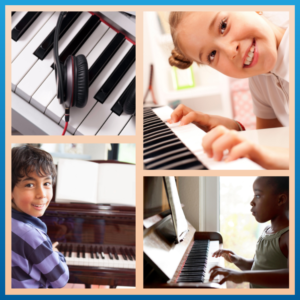“What should she practice?” “How long should he practice?”
These are common questions that parents have who are interested in their children’s piano lessons.
A good rule of thumb for how long your child should practice piano lessons is 2 minutes for every year of age everyday. I know that it’s very difficult to make sure that your children practice every day. Even the most streamlined and organized of households may skip a day or two of practice. Try to keep it consistent.
Piano practice, however, is not only about time. It should mirror what we do in the lesson.
Warm up: How you warm up is determined by what your warm ups are during your lessons. Do you play from technical books such as A Dozen a Day, Hanon, or Fingerpower? Do you play chord studies from memory? Play these exercises well. If you have learned a new exercise during your last lesson, play it three times. This should take about one-third of your practice time.
Review: Play your repertoire. Play the pieces that you know. Keep three “DONT’S” in mind while you practice piano reviews:
- Do not gloss over your pieces.
- Do not play them fast.
- Do not use this time to bumble, fumble, mumble, and stumble.
Pretend your teacher is right behind you, keeping beats. This time should also be about one-third of your practice.
New pieces: Practice your piano piece in sections (2 to 8 measures) by repeating the particular section until mastered, them put it all together with joining sections. Isolate the trouble spots: Focus on them by playing slowly. Learn to sing or hum your melody. If you can’t sing it, you can’t play it. This is your last third of practice time.
Above all, maintain a cheerful, healthy attitude.

